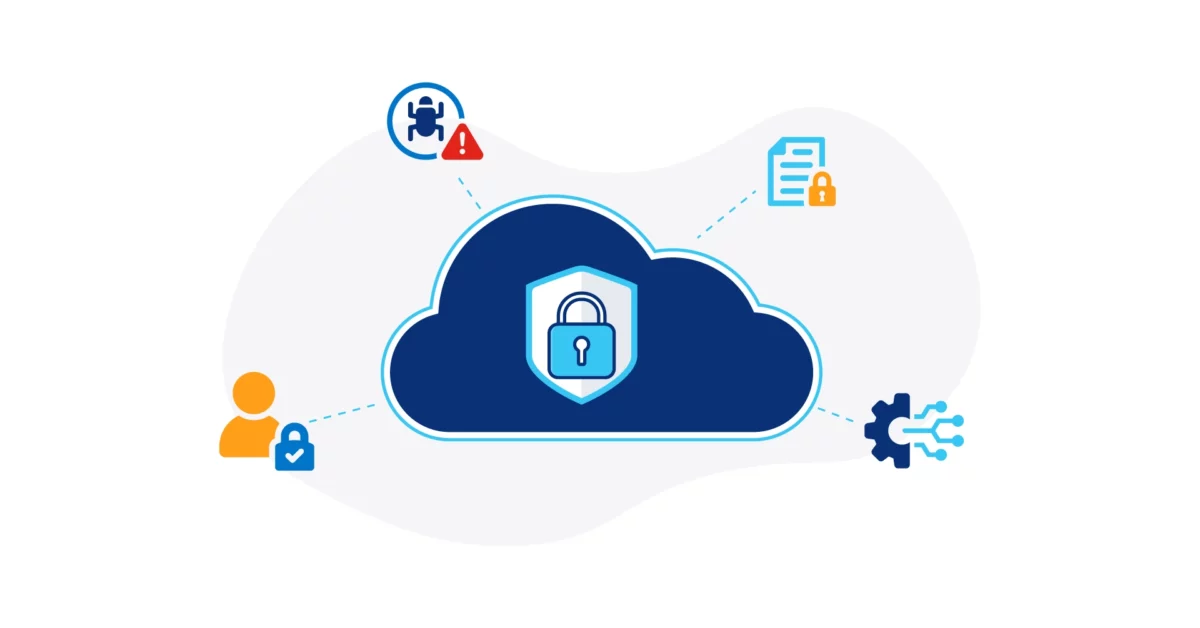
Cloud computing has become an essential part of modern business, offering agility, scalability, and cost-efficiency. However, moving to the cloud also exposes your data and applications to various security threats, such as data breaches, unauthorised access, compliance violations, and performance issues.
Furthermore, the extended cloud environment opens companies to the risks of data breaches, insider threats, third-party risks, and cloud misconfigurations. Companies will also need to comply with compliance and regulatory stands, depending on the country where they operate.
How should organisations build their cloud security strategy?
A cloud security strategy should be built around real-time monitoring, identification and remediation of cloud security threats, enhanced awareness of employees through periodic training, and coverage of third- and fourth-party supply chain risks in the cloud by increasing visibility and regular auditing.
Cloud environments must comply with specific requirements from compliance standards such as PCI DSS, HIPAA, and GDPR. The cost of non-compliance is not only financial in the form of fines, but also involves loss of customer trust.
Meeting compliance requirements requires a combination of right internal processes and technology, as well as specific external partnerships. Access controls, data encryption, and regular auditing are key components of a compliance framework.
Cloud-based services should be regularly audited for compliance with HIPAA, PCI, and GDPR wherever they are relevant. Given the shortage of security experts who can audit for compliance with deep knowledge of these standards in-house, the services of external experts are crucial to compliance and cloud security risk management.
Defining what and how to protect in a cloud environment is a challenging task, requiring expert assistance. So, what can businesses start doing now to mitigate cloud security risks?
Actions to take to protect your cloud environment
Privilege level matters
Undetected insider threats can lurk around in the cloud environment due to errors by employees, contractors, and third and fourth parties. Third-party providers with security vulnerabilities can expose corporate networks to cyberattacks. Hybrid working environments and third-party providers can extend attack surfaces beyond what typical solutions can observe.
One of the best practices for cloud security is to follow the principle of least privilege, which means granting the minimum level of access and permissions necessary for users and applications to perform their tasks. This can help prevent account hijacking, malicious insiders, abuse of cloud services, and data loss.
For example, you can use role-based access control (RBAC) to assign roles and permissions based on the user’s identity, job function, and responsibilities. You can also use identity and access management (IAM) tools to manage user accounts, credentials, and policies.
Multi-factor authentication is your friend
An effective way to enhance cloud security is to enable multi-factor authentication (MFA) for privileged accounts, such as administrators, developers, and managers. MFA requires users to provide more than one factor of authentication, such as a password, a code sent to their phone, or a biometric scan. This can add an extra layer of security and reduce the chances of unauthorised access.
MFA can be utilised for logging into your cloud service provider’s console, accessing your cloud resources, or performing sensitive operations. You can also use MFA for your employees who access your cloud applications remotely.
Everything starts from education
One of the challenges, if not, the biggest challenge in cloud security is human error. Many cloud incidents are caused by mistakes or negligence by users who are unaware of the risks or best practices. For some organisations today, they have made it mandatory for all employees to be educated about cloud security risk and how to avoid them
For a start, organisations should begin to provide regular training sessions, workshops, webinars, or newsletters on cloud security topics. You can also create a cloud security policy that outlines the dos and don’ts of using the cloud. As an added measure, conduct audits and assessments to measure the effectiveness of your cloud security awareness program.
Encrypt as much data as you can
Data encryption is one of the most effective ways to protect your data from unauthorised access or exposure in case of a breach. Encryption involves transforming your data into an unreadable format that can only be decrypted with a key. The rule of thumb is: You should encrypt your data both in transit and at rest.
You can use encryption protocols such as SSL/TLS or HTTPS to secure your data in transit between your devices and your cloud service provider. Additionally, take advantage of encryption tools or services provided by your cloud service provider or a third-party vendor to encrypt your data at rest in your cloud storage or database.
Automated everything
Automation can help you mitigate cloud security risk by enabling you to monitor, detect, and respond to threats faster and more efficiently. Automation can also help you enforce compliance and governance policies across your cloud environment.
Make use of automation tools or services to scan your cloud configuration for vulnerabilities or misconfigurations. They can alert you of any suspicious activities or anomalies in your cloud environment. At the same time, you can remediate any issues or incidents automatically or with minimal human intervention.
Take the first step today
80% of organisations reported at least one cloud security incident in the past year. Get started with us today by gaining complete visibility into your cloud estate and the most critical security risks in less than 24 hours.
Request for a free cloud security risk assessment now: https://apac.lumen.com/cloud-security-risk-assessment/


